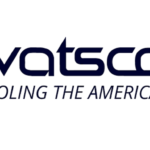With a global market reliant on internet purchasing and the increased cost of direct sales calls, today’s digital age requires manufacturers and distributors to team up and align as supply chain partners. Distributors and customers are demanding superior service from their suppliers, and new procurement methods that include just-in-time deliveries, digital commerce, and systems contracts that are driving distributors and manufacturers to work much closer together. Furthermore, the increased rate of new product introductions, more frequently changing customer needs, and growing sophistication of doing business electronically necessitates tighter collaboration between manufacturer and distributor partners.
In the past, the burgeoning size of manufacturing organizations has hindered the open communication and close relationships that help manufacturers grow alongside their typically smaller distributor partners. Every manufacturer who goes to market with distributors or dealers is at least one step removed from users. Many of these manufacturers tout that they’re customer- or market-oriented, but in reality, they continue to be product-driven, pushing goods on users through distributors. They simply sign-up new distributors, load them with inventory, and forget to provide support. Unfortunately, these same manufacturers lack the mechanisms to formally listen and respond to the needs of distributor partners, OEMs and end-use customers. To bridge the gap, they should access and evaluate information given to and from distributors to better develop, focus and launch their products, services and new programs.
Bridging the user gap
The seriousness of this challenge was stated by the sales manager at the computer printer division of Hewlett Packard (now called Allegiant). “Everyone talks about how important it is to be close to the customer. But, since we sell the vast majority of our products through distributors, we are far removed from the changing requirements of our users. This distance from users hurts us when competitors respond to their needs before we even learn of them. As a result, we often come out with too little, too late. If we knew more about end-user requirements and competitive offerings sooner, we could focus our products and services more effectively. Additionally, if we had better market facts, we could provide the support services and marketing assistance that our distributors really need to be successful in their marketplace. What we need to find is an early warning mechanism which will enable us to gather intelligence about customer requirements and the competition; test new product and marketing programs ideas out before they are frozen and implemented; and then improve coordination of all marketing efforts with our distributors.”
One of the best ways to understand distribution businesses, stay closer to the markets they serve, and collaborate with distributors as true partners is through an effective distributor advisory council. A distributor or dealer advisory council (DAC) is a forum composed of an equal number of individuals from both the manufacturer and its distributor network. Rather than act as a legislative body, a DAC openly discusses common matters of importance to users, distributors and manufacturers, as well as presents feedback on a manufacturer’s proposed or existing policies. As many small- and medium-size distributors are seriously threatened by nationwide giants such as Amazon, Walmart, Home Depot and Lowes, a DAC can help make distributors more competitive, uncover underserved market segments, and provide application know-how that many big-box resellers do not provide.
The most effective DACs
To help manufacturers avoid the typical pitfalls encountered when they organize and manage a distributor advisory council, The Corporate Development Institute (CDI) surveyed nearly 300 distributor principals in a variety of industries to determine which manufacturers had the most effective DACs. Since distributors usually carry the lines of several competitive manufacturers, they are readily able to compare manufacturer policies, practices and councils. These same distributors repeatedly named 24 manufacturers with the most consistently well-run distributor councils. The CDI then interviewed these 24 companies to identify and describe which management practices led to their more effective DACs.
To learn more about DACs, download the full report, Build Stronger Partnerships with Distributor Advisory Councils. Based on interviews with more than 300 distributor principals, this report provides a best-practice roadmap for manufacturers and distributors on why and how to create DACS that can help supply chain partners target markets and align resources more effectively.
James Hlavacek, Ph.D., is chairman and founder of The Corporate Development Institute, a global management development company based in Charlotte, North Carolina. He has helped create and improve distributor advisory councils for a wide range of companies. He has more than 40 years’ global experience as a management educator and strategy consultant, working with long-term clients such as Parker Hannifin, Lockheed-Martin’s Skunkworks, 3M, Unilever, Caterpillar, SC Johnson, Timken, Henkel-Loctite, and BASF. In addition, he has served as a board member for Fortune 500 companies and several successful venture capital startups. Previously, he served as chairman of marketing at Case Western Reserve University and director of the Institute for Executive Education at Wake Forest University’s graduate school of management. He is the author of six books and more than 50 articles.
Related Posts
-
If you’ve never used or are unfamiliar with a Distributor Advisory Council (DAC), you could…
-
The seasonally adjusted Fastener Distributor Index (FDI) for March was 66, down only slightly from…
-
Miami-based Watsco has added Acme Refrigeration, whose 2020 revenues were $60 million, to its portfolio.




